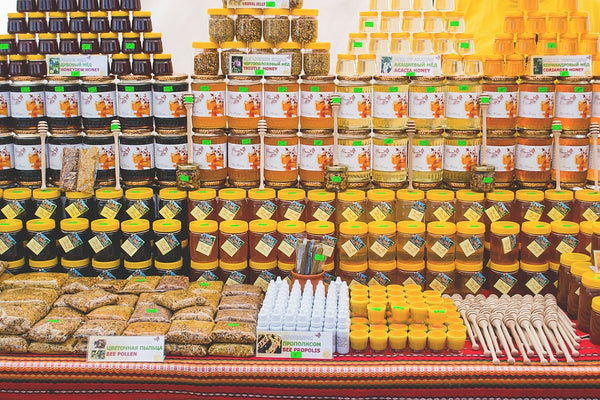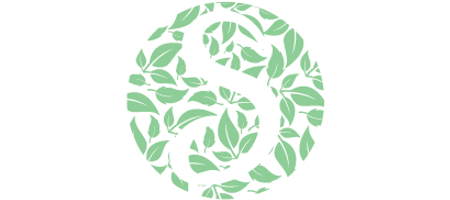From the mummification of pharaohs and protecting art in ancient Egypt, to an adhesive to join surfaces together and make cooling ointments in ancient Greece, and even to treating wounds and enhancing skin in China, beeswax has been used for a variety of purposes throughout history! It’s versatile nature and endless benefits continue to make it a go-to choice for making candles, polishes, art, moldings, cosmetics, and pharmaceuticals today.
So how is this lovely wax made you ask?
Young honey bees have special glands on the sides of their belly that secrete liquified wax, which hardens into thin scales when exposed to air. To make their comb, bees remove bits of wax from under their abs and chew and mold them into hexagonal cells that create the honeycomb. Worker bees use their mouths as a measuring tool to determine the thickness of the comb and if more wax is needed. Beeswax comes to be when there is a great supply of flower nectar.

And is all this use of beeswax harming the bees?
While this has become a controversial topic, we truly believe that it depends on where you purchase your beeswax. Due to its variety of uses and benefits, many commercial farmers are taking advantage by abusing and harming their bees. However, there are many family farms that not only care for and work in harmony with their bees, but they also farm free of pesticides and other chemicals that would harm both bees and us in the process.
Natural beekeeping methods utilize the least intrusive way of collecting beeswax, which is when the supers are full of honey. Beekeepers know that the honey is ready when they see the bees cap over the cells with wax. As long as the wax is taken from the supers and not interfering with the main hive body, the bees won’t be disrupted. A lot of natural beekeepers are also learning methods to help save honeybees from extinction. So for us, when looking into beeswax producers, the question to ask is whether the farmer focuses on volume and efficiency or follows a natural approach and works in harmony with the bees.
Benefits + Uses
Locks in Moisture: Beeswax naturally seals moisture into our skin so it’s especially beneficial for dry, cracked skin or lips. It’s also non-comedogenic so it won’t clog pores ;)
Creates a Protective Barrier: Beeswax creates a breathable, protective barrier on our skin, which helps protect us from environmental irritants, such as harsh winds, pollution, and smoke. This also makes it a great furniture polish for wood surfaces.
Antibacterial + Antifungal: By naturally inhibiting bacteria growth, beeswax can be helpful in treating eczema, dermatitis and other skin conditions. It’s also great for healing minor cuts and wounds.
Waterproofing: Beeswax creates a natural water-resistant barrier on our skin, which makes it a perfect ingredient in sunscreens and makeup. It can even be used to waterproof fabric and shoes!
Rich in Vitamin A: Also rich in Vitamin A, beeswax helps improve hydration and encourages skin cell production.
Anti-Inflammatory: Beeswax has natural anti-inflammatory properties which are great for reducing acne and restoring the skin.
Natural Fragrance: The natural honey fragrance of beeswax creates a light, sweet aroma without all of the chemicals and toxins in unnatural fragrances.

Where to Buy
I recommend buying your beeswax from local farmers to ensure the bees are not harmed in the production and to really know where your products are coming from. We source our beeswax from a family-operated company that is committed to loving their bees and avoiding pesticides.
How to Store
Beeswax can last forever if stored properly. Its ability to withstand high-temperature fluctuations is how bee colonies survive through hot summers and harsh winters. With a high melting point of 145 degrees Fahrenheit, it takes a lot to break this beauty down! However, it’s always best to store natural ingredients in a cool, dry place out of direct sunlight.
Recipes
Wood Furniture/Bowls Polish: Give wood furniture new life with this easy homemade polish!
- Ingredients
- 3 tbsp organic coconut oil
- 1 tbsp grated beeswax (preferably from a farmer's market or locally sourced)
- Method
- Fill a small saucepan with a few inches of water
- Put the coconut oil and beeswax in a glass bowl and place on top of saucepan to create a double boiler
- Heat on Low until the ingredients melt, stirring frequently
- Remove from heat and pour into a glass jar and allow to cool
- Once hardened, use a clean cloth or dry, clean fingers to gently rub the wax onto your wood furniture or bowls
- Buff with a soft cloth until any leftover residue is removed
- Polish will last for 1-2 years if stored in a cool, dry place
- Tip: Be sure to dust furniture before applying!
Beeswax Hair Pomade: No need for chemical-laden hair products with this easy DIY pomade!
- Ingredients:
- 1.5 tbsp raw, fair trade shea butter
- 1 tbsp grated beeswax (preferably from a farmer’s market or locally sourced)
- 2 tbsp organic jojoba oil (also available at Whole Foods)
- Methods
- Fill a small saucepan with a few inches of water
- Put ingredients in a glass bowl and place on top of saucepan to create a double boiler
- Heat on Low until the ingredients melt, stirring continuously
- Remove from heat and pour into a glass jar and allow to cool
- Tip: Work a small amount of the pomade between your fingers to soften and remove clumps before applying to hair. Style as usual.
